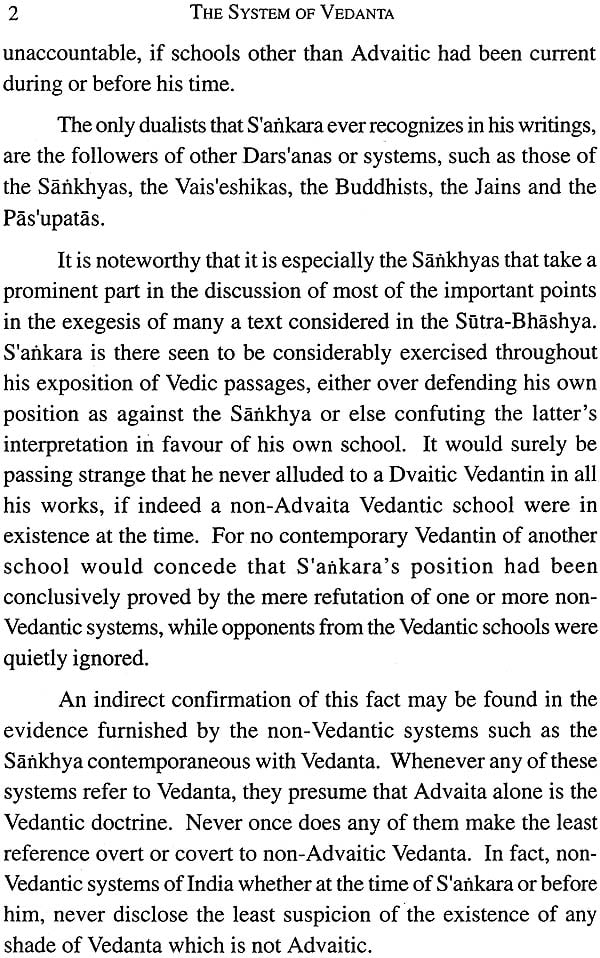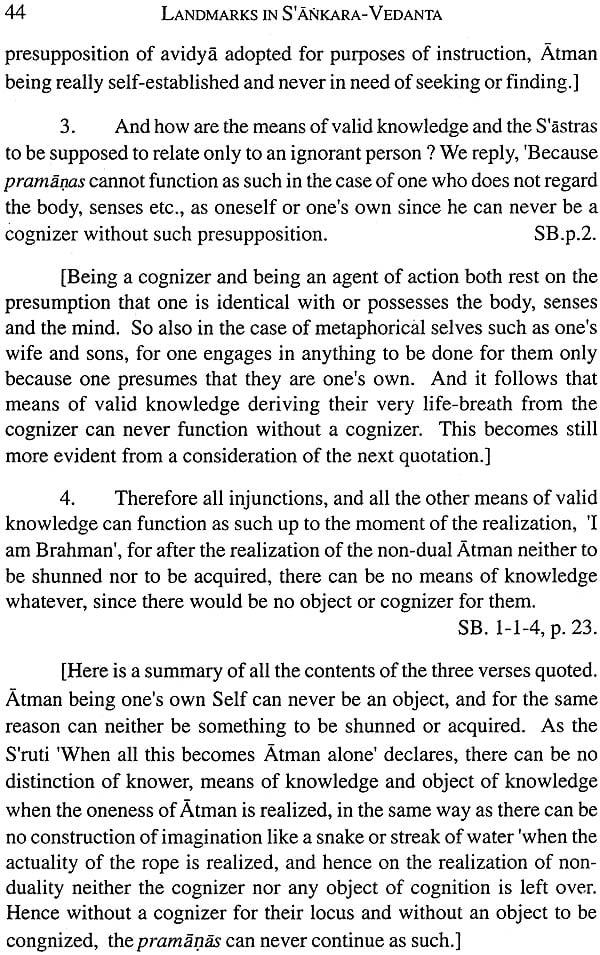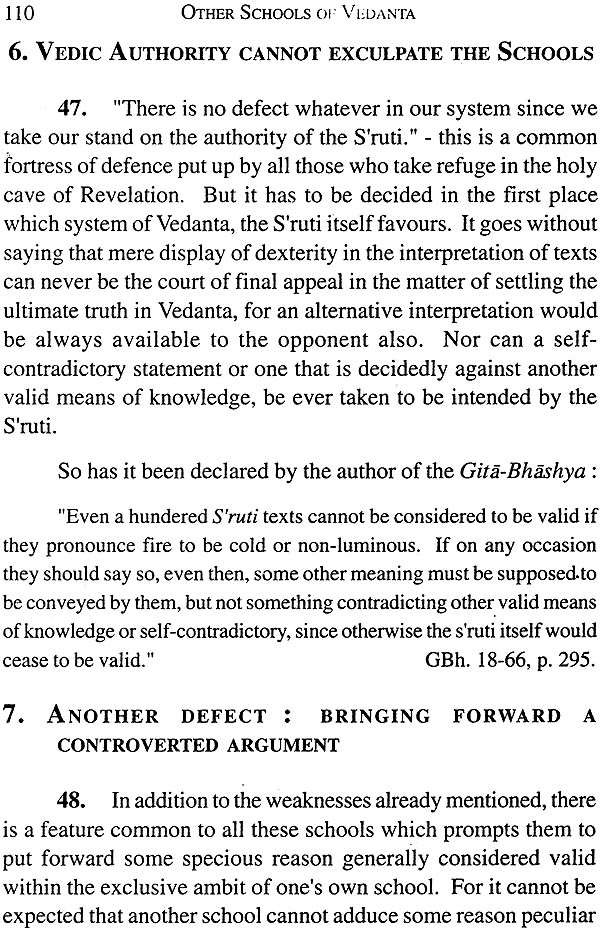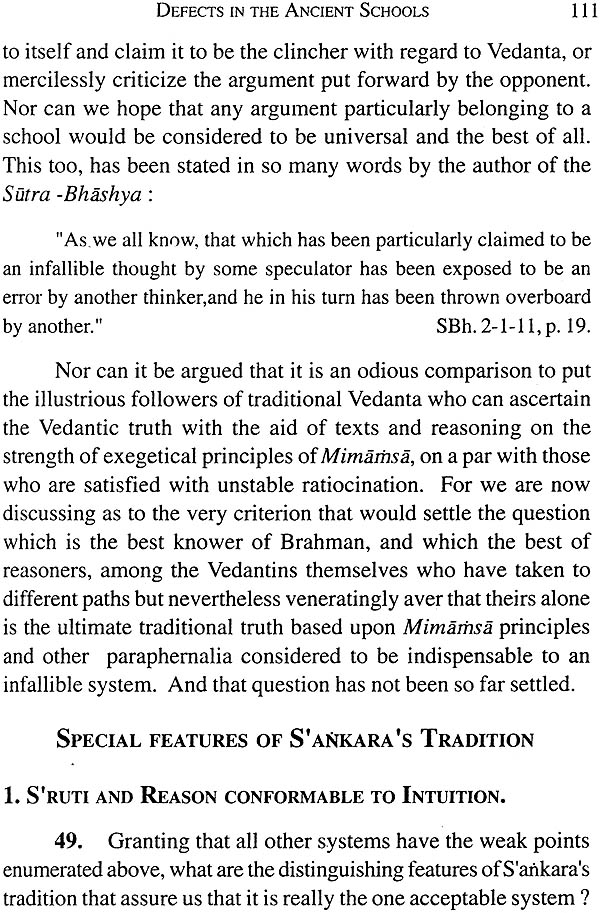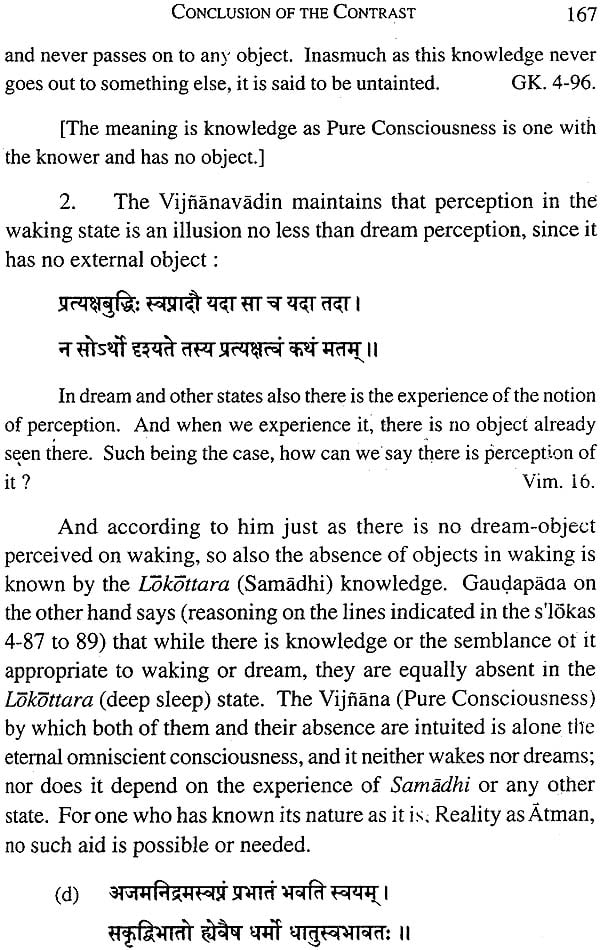
Suddha-Sankara-Prakriya-Bhaskara (Light on the Vedantic Method According to Sankara)
Book Specification
| Item Code: | NAB782 |
| Author: | Sri Sri Satchidanandendra Saraswathi Swamiji |
| Publisher: | Adhyatma Prakashan Karyalaya, Bangalore |
| Edition: | 2001 |
| Pages: | 196 |
| Cover: | PAPERBACK |
| Other Details | 8.5 inch X 5.5 inch |
| Weight | 230 gm |
Book Description
Shri Satchidanandendra Saraswathi Swamiji (1880-1975 A.D) the founder of Adhyatma Prakasha Karyalaya Holenarsipur Hassan Dist. Karnataka a public charitable trust wrote and published more than 200 books in Kannada, English and Sanskrit with a view to propagate pristine pure Advaita Vedanta as expounded by Shri Gaudapada Shri Sankara Bhagavatpada and Shri Sureshwara in their famous extant works based on the three canonical Vedantic texts viz ten principal Upanishads, Bhagavad-Gita and Vedanta Sutras (Popularly known as Brahma Sutras). The revered Swamiji carried out research for over six decades with a profound sense of dedication and missionary zeal so as to cleanse Advaita Vedanta of the dross and distortions that it has acquired in the post Sankara era. Although the Swamiji has authored nearly 20 odd books in English and over 25 books in Sanskrit many of his masterpieces were written in Kannada. In order to provide the benefit of these gems the Karyalaya has brought out several books in English which are faithful translations of the original texts in Kannada for the guidance and benefit of ardent students of Advaita Vedanta. He was not just a rare and accomplished individual but a mighty and magnificent institution.
The author was born in Karnataka in 1880, & assumed the name of Y. SubbaRao. He taught English in Bangalore as a house holder till retirement in 1935. Initiated for the study of S'ankara by the Jagadguru of Shringeri at about the age of 20, he devoted his life as layman and monk to the study and propagation of S'ankaras interpretation of the upanishads, in its theoretical & practical aspects.
All the booklets of the series printed during the First Edition its sold out and as there is a great & incessant demand from jignas us of English knowing people not only in India but also in foreign countries, the second (comprehensive) edition now is brought out. All the three booklets, which contain continuous matter of the title, have been now combined & published as one book. We hope that this will facilitate all the readers to obtain a clear thought of the subject in full.
Sri Subhana Saxena, an Indian settled in London, has held senior positions in a number of multinational companies. He has studied many books of Swamiji through the grace of his Gurus from Mattur village, in Shimoga, Karnataka. We hope through his mission Swamiji's message & works will find a place throughout foreign countries.
The Karayalaya owes a deep debt of gratitude to Shri Subhana Saxena, who has financed the entire cost of bringing out this comprehensive edition.
May we hope that the readers will give wide publicity to this: a comprensive edition dealing with pure pristine S'ankara's Vedanta.
Kindly go through the prefatory remarks attached by us to the first installment of the series of Sanskrit booklets of this name. This free translation of it is to help those that want to understand the Sanskrit original better. It is a companion to the original work and is intended for those who know English better, but would still like to assimilate Vedantic thoughts through that sacred language if only they could secure some assistance.
At our request Swamiji has effected a few additions and alterations in this English version which it is hoped will enhance the usefulness of the original contribution. A generous donor who prefers to do this piece of service incognito has laid us under a deep debt of inexpressible gratitude by financing the publication.
My we hope will give wide publicity to this new translation series of Vedantic booklets?
This booklet is a free translation of the Suddha Sankara Prakriya Bhaskara written by me in Sanskrit. The aim of the series of booklets of which this is the first installment may be learnt from the publisher’s prefatory remarks to the Sanskrit original. It is intended for readers who wish to have an outline of the thoughts contained in my Vedanta Prakriya Pratyabijna a Sanskrit work which contains a comparative study of all the important Vedantic systems available from the most ancient times up to the time of Sarvajnatma just to illustrate how all the post Sankara Vedantins up to that epoch no less than the ancient monists have failed to recognize the only method which holds the key to the right understanding of the Upanishadic teaching.
The present series is complete is itself and can be studied independently by those who wish to be acquainted with this Unique method of the Upanishads without taxing their brains at the very outset with all the details of the argument.
As it was felt that an English translation of the series might facilitate its study for those whose knowledge of Sanskrit is limited this first installment of the translation series has been placed before the public to see how far it serves the purpose. Whether the second installment should be undertaken at all depends on how my readers receive this one.
Any suggestions calculated to improve the translation series so as to make it more useful to those for whom it is intended will be thankfully received.
All rights of printing & publishing this brochure has been unconditionally made over to the Adhyatma Prakasha karyalaya Holenarasipur as in the case of all my previous writings.
| | ||
| 1 | Non Advaitic Vedantins never referred to by Sankara | 1 |
| 2 | Vedantins at the time of Sankara were all Advaitins | 3 |
| 3 | No Vedantin recognizing the distinction of the individual and the supreme self during badarayana’s time | 4 |
| 4 | Various Doctrines of other Advaitic Schools referred to by Sankara | 6 |
| 5 | Conclusion | 13 |
| | ||
| 6 | Sankara the Resuscitator of an old tradition | 14 |
| 7 | Gaudapada himself refers to more ancient teachers | 16 |
| 8 | Sankara’s earnestness with regard to tradition | 18 |
| 9 | Dravidacarya | 19 |
| 10 | Teacher Brahmanandin | 24 |
| 11 | Uapvarshacarya | 27 |
| 12 | Dvaita Vedanta conspicuous by its absence during Sankara’s time | 29 |
| 13 | Conclusion | 31 |
| | ||
| 14 | Self evident nature of Brahman as one’s own self | 32 |
| 15 | The Individual self is by his very nature no doer of action for he is identical with Brahman as pure being | 34 |
| 16 | The Individual soul is essentially brahman not cognizer | 37 |
| 17 | Pramanas are such only till knowledge accrues | 41 |
| 18 | How Sastra is the Final Pramana | 45 |
| 19 | Conclusion | 49 |
| | ||
| 20 | The Method in a nut shell | 51 |
| 21 | Assumption of specific features is only a device employed for the purpose of teaching | 52 |
| 22 | The Deliberate superimposition employed in Vedanta never affects its validity | 56 |
| 23 | Why the Method of Superimposition and Rescission alone is employed exclusively in Vedanta | 58 |
| 24 | That Brahman is known only through the negation of the superimposed is a teaching common to all the three Prasthanas | 59 |
| 25 | Teaching by means of superimposition is only for negating what is not | 60 |
| 26 | Extracts from the Bhashyas | 63 |
| | ||
| 27 | Relation of the sequel to the preceding section | 67 |
| 28 | The Method of distinguishing Vidya and Avidya | 67 |
| 29 | The Method of Sastra Pramanya | 70 |
| 30 | The Method of Creation | 73 |
| 31 | The Method of Cause and Effect | 76 |
| 32 | Brahman’s entry into creation as a jiva | 80 |
| 33 | The Method of Religious works and Meditation | 82 |
| 34 | The Method of the Five Kosas | 83 |
| 35 | The of the self effulgence | 85 |
| 36 | Exit Going away and returning are all from the stand point of imputation | 86 |
| 37 | The Method of the Universal and the Particular | 88 |
| 38 | The Method of three states also a device | 90 |
| 39 | The Convention of Bondage and Release & Co. | 91 |
| | ||
| 40 | Relation of the sequel to the preceding section | 98 |
| 41 | Common characteristics of ancient schools | 98 |
| | ||
| 42 | The Dogma that the Upanishads are injunctive in their Aim | 102 |
| 43 | The Inconsistency of the Sariraka being composed afresh | 104 |
| 44 | No Need for Aproaching an Acarya | 105 |
| 45 | The Misconception that Final Release is an effect | 106 |
| 46 | The Doctrine of Release as the destruction of Avidya | 106 |
| 47 | Vedic Authority cannot exculpate the schools | 110 |
| 48 | Bringing forward a controverted argument | 110 |
| | ||
| 49 | Sruti and Reason conformable to intuition | 111 |
| 50 | The Upanishads purpost to teach reality as without specific features | 113 |
| 51 | Release from Actual bondage not assumed | 116 |
| 52 | All charges rebuted by assuming two different stand points | 118 |
| | ||
| 53 | Objection | 122 |
| 54 | Suspicion of the admixture of Buddhisitic doctrine in this system | 124 |
| 55 | Reason for trusting the Karika tradition | 129 |
| 56 | The Disparity of the two teachings with regard to reality | 130 |
| 57 | Divergence of the two system with regard to non organization | 134 |
| 58 | Disparity in the methods of establishing reality | 140 |
| 59 | Conclusion of the comparison with the sunya doctrine | 146 |
| 60 | Vedantic Vijnana contrasted with Buddhistic Vijnana | 150 |
| 61 | Dissimilarity in the method of rejection of the external object in the two systems | 154 |
| 62 | Mere employment of the word Citta does not entail similarity | 158 |
| 63 | Not even the employment of the term Lokattara can engender the similarity of the systems | 160 |
| 64 | Dependence on Yoga and the absence of it sharply distinguish the two systems | 162 |
| 65 | Conclusion of the contrast | 165 |
| 66 | Conclusion of the repudiation of Buddhistic influence | 169 |
| 67 | Conclusion of the section | 170 |
